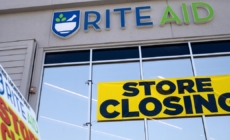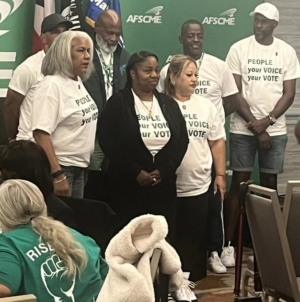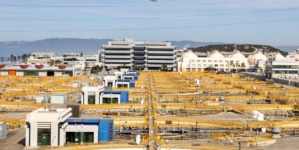-
Democratic candidates for governor focus on affordability and healthcare at labor forum - 21 mins ago
-
Cowboys Getting Explosive Offensive Weapon Back for Week 5 vs Jets - 35 mins ago
-
Kerry Carpenter clobbers two-run home run, giving Tigers lead over Mariners - 36 mins ago
-
Rite Aid closes all stores nationwide - 52 mins ago
-
UFC 320 Betting Promos: Every Single Sign-Up Offer You Need For Fight Card - about 1 hour ago
-
‘It Looked Ugly’: MLB On FOX Crew React to Yankees After Blue Jays’ Big Win - about 1 hour ago
-
A look at the booming business of Taylor Swift and her brand - 2 hours ago
-
At ‘We The People Rising’ rally, Angelenos call for end to ICE raids - 2 hours ago
-
How to Watch UFC 320: Live Stream Ankalaev vs Pereira, Main Event, TV Channel, Fight Card - 2 hours ago
-
Cal Raleigh’s postseason expectations, Tigers vs. Mariners ALDS preview - 2 hours ago
Chevron’s El Segundo refinery has a history of safety, environmental violations
The explosion and hours-long fire at Chevron’s refinery Thursday night in El Segundo deeply unnerved communities in the South Bay.
The blast sent shock waves throughout the refinery grounds, allegedly injuring at least one worker, and jolting residents as far as a mile away. A 100-foot-tall pillar of fire cast an orange glow over the night sky. And towering plumes of smoke and acrid odors drifted eastward with the onshore winds.
While local regulators are investigating the fire, environmental advocates lament that federal safety agencies likely won’t be joining in the effort to find the cause of Thursday’s explosion — perhaps preventing similar hazardous chemical releases in the future. The incident was one of the most perilous events in the refinery’s 114-year history, adding to a long list of environmental and safety violations, according to public records reviewed by The Times.
Most staff at the Occupational Safety and Health Administration, the federal agency tasked with investigating workplace safety, is not working because of the ongoing federal shutdown. The U.S. Chemical Safety and Hazard Mitigation Board, which determines root causes from dangerous chemical releases, is also furloughed and could lose its funding because of proposed budget cuts by the Trump administration.
“The Trump administration has defunded the Chemical Safety board, and the federal government is shut down right now,” said Joe Lyou, a resident of nearby Hawthorne and president of the Coalition for Clean Air, a statewide nonprofit. “So there is a very good possibility we are never going to know what really caused this, because the experts in figuring this stuff out are no longer there to do that.”
Without clear answers, labor unions are fearful that a similar disaster could endanger thousands of workers at California’s 15 refineries, which are mostly clustered in Southern California and the Bay Area.
“Companies are making billions in profits and still are making it nearly impossible to make sure we’re safe from terrible disasters,” said Joe Uehlein, board president of the Labor Network for Sustainability. “In California, we’ve seen horrific injuries to workers and tens of thousands of residents have had to seek medical attention in refinery accidents. This time, we got lucky.”
The Chemical Safety Board has identified causes of scores of refinery incidents over its history, including the 2015 explosion at the ExxonMobil refinery in Torrance that injured at least two workers.
In that incident, the board’s investigation found multiple safety failures, including a severely eroded safety valve that allowed flammable gases to dangerously seep into unwanted areas. The board also discovered that a large piece of debris almost struck a tank of hydrofluoric acid, which could have resulted in a deadly release of the highly toxic chemical, leading to pressure to cease using the chemical.
But, for the Chevron refinery explosion, there is no guarantee such an investigation will take place. The Trump administration proposed eliminating the budget for the Chemical Safety Board this fiscal year, starting Oct. 1, sunsetting the 27-year-old federal agency. Environmental advocates say that is a mistake.
“They’re undermining our ability to prevent these accidents by taking away the accountability mechanisms in the federal government,” said Lyou. “That’s a huge concern. It’s not politics. Democrats and Republicans live around the Chevron refinery, and they both want to make sure that the refinery is operating safely.”
In the absence of federal regulators, the South Coast Air Quality Management District is investigating potential violations of air quality rules and permit conditions. The refinery will also be required to submit a report analyzing potential causes and equipment breakdowns within 30 days.
So far, the air district has said the fire originated in the refinery’s ISOMAX hydocracking unit, which uses hydrogen to refine oil into jet fuel and diesel. The refinery’s air monitors detected a spike in airborne chemicals after the fire broke out, but air district officials say conditions returned to normal levels after a few hours.
Environmental advocates say the extent of the fallout may not be known until there is a larger examination of air quality monitors.
“I was very surprised that the air district reported they weren’t seeing terribly high levels of pollution,” said Julia May, senior scientist for California-based nonprofit Communities for a Better Environment. “Sometimes in a big refinery fire like this, it goes straight up. But then the smoke comes down in other areas. And that’s a lot of pollution that’s going someplace.”
The Chevron facility had been cited numerous times for environmental and safety violations, according to local and federal records.
The South Coast Air Quality Management District has issued 13 notices of violations over the last 12 months, and 46 in the last five years. Most recently, on Sept. 22, the air district cited the facility for a large chemical leak and failing to keep its equipment in proper working condition.
In August, Chevron representatives had also asked the air district for leniency in assessing compliance with air quality rules while it was working to remove unwanted buildup inside its furnace tubes — conditions that they said risked equipment overheating and potentially failing.
OSHA records show the agency conducted at least 15 inspections at the Chevron refinery in El Segundo over the last decade, identifying 17 violations.
In September 2023, OSHA issued citations related to heat illness prevention requirements, ladderway guardrails and a failure to conduct a thorough hazard analysis — an internal assessment intended to control fires, explosions and chemical releases.
In October 2022, after conducting a planned inspection of the Chevron refinery, OSHA records show the agency identified a “serious” violation of an agency standard requiring employers to “develop, implement and maintain safe work practices to prevent or control hazards,” such as leaks, spills, releases and discharges; and control over entry into hazardous work areas.”
During the government shutdown, it’s unclear if OSHA’s pared-down staff will be investigating Thursday’s refinery fire. An OSHA media office phone number went straight to a recorded message stating that the line is not being monitored and “due to a loss of funding, certain government activities have been suspended and I’m unable to respond to your message at this time.”
For some environmentalists, the Chevron refinery fire has underscored why it’s necessary to transition away from fossil fuels altogether.
“They [the refineries] have great workers and great fire departments to respond, but this is an inherently dangerous operation that handles hundreds of thousands of barrels per day of flammable explosive materials under high temperature and high pressure,” said May, the senior scientist for Communities for a Better Environment.
“When something goes wrong, you can have a runaway fire. They did a great job at getting it under control. But do we really want antiquated dirty energy in our communities?”
Source link































